First Steps with BEAST 2
Tim Vaughan
(Slides adapted from a presentation by Louis du Plessis)
(Slides adapted from a presentation by Louis du Plessis)
cEvo group, D-BSSE, The ETH Zurich
Taming the BEAST, 18th Feb, 2019



Why are we here?
We all have one thing in common...
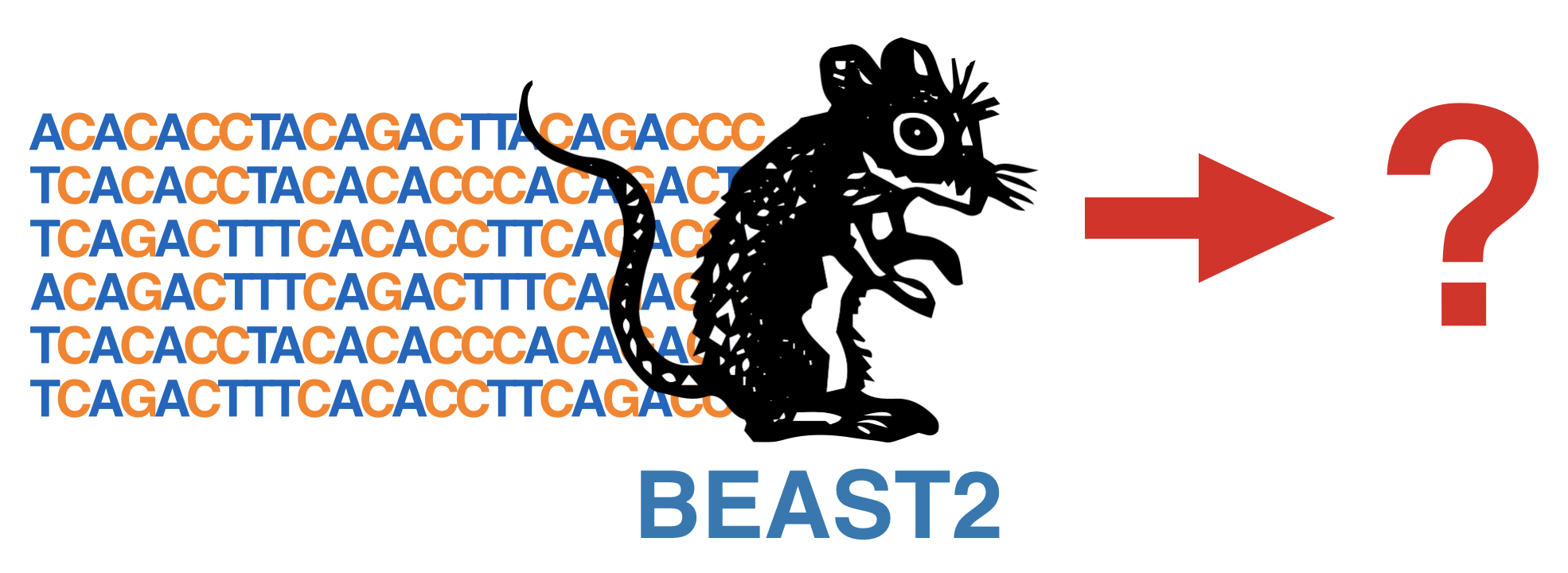
We all use (or want to use) BEAST 2 to analyse our data.
But how?
Bayesian inference
\begin{equation*}
P(\color{blue}{\text{model params}}|\color{darkorange}{\text{data}}) =
\frac{P(\color{darkorange}{\text{data}}|\color{blue}{\text{model params}})P(\color{blue}{\text{model params}})}{P(\color{darkorange}{\text{data}})}
\end{equation*}
\begin{equation*}
\text{Posterior} = \frac{\text{Likelihood}\times\text{Prior}}{\text{Model Evidence}}
\end{equation*}
- Prior
- Original probability for the model parameters/components. All parameters have priors, whether you specify them or not!
- Posterior
- Updated probability for the model parameters in light of the data.
- Likelihood
- Probability of data give parameters (defined by model).
- Model Evidence
- Probability for data given model (any combination of parameters): used for Bayesian model selection.
What goes into a BEAST 2 Model?
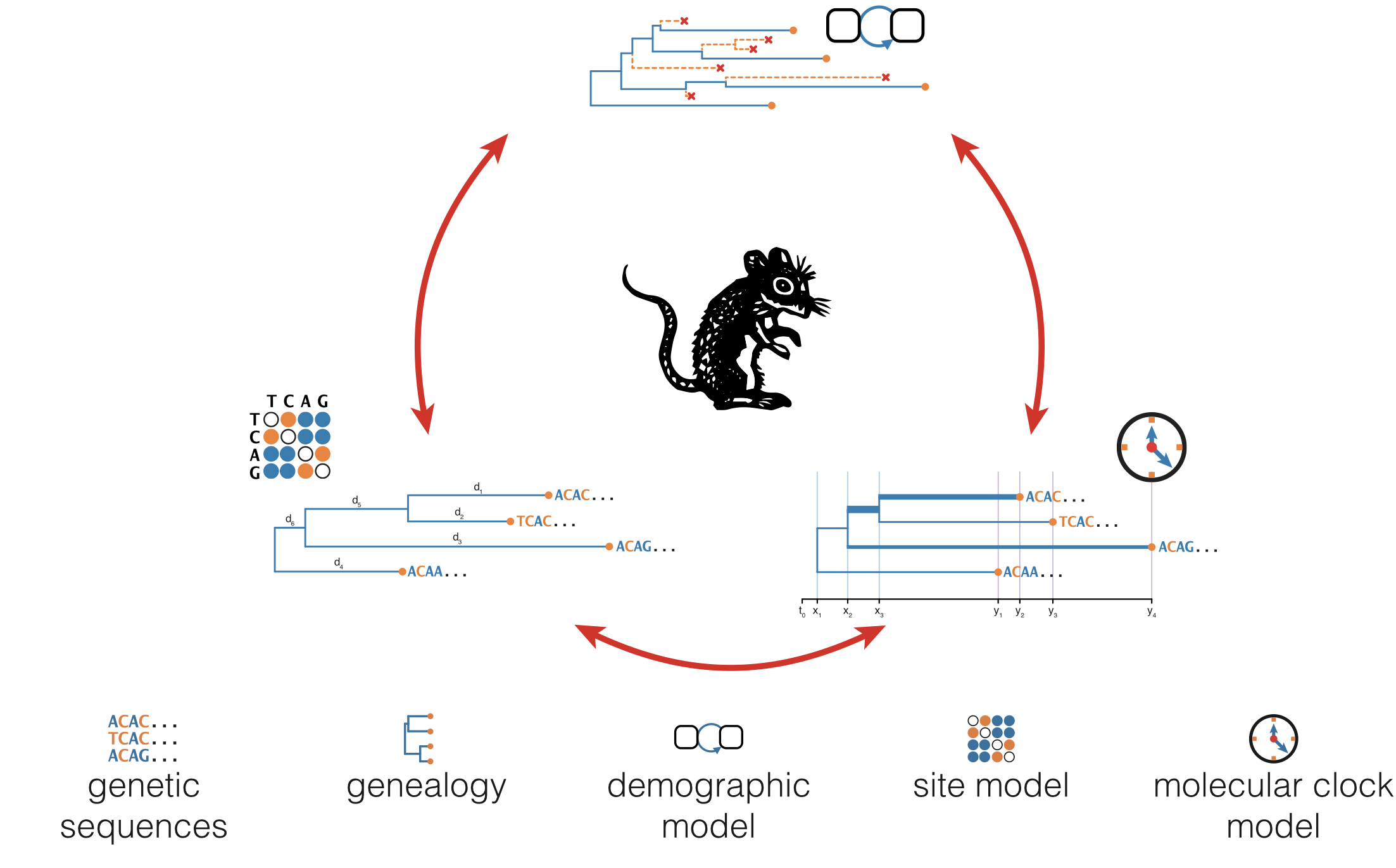
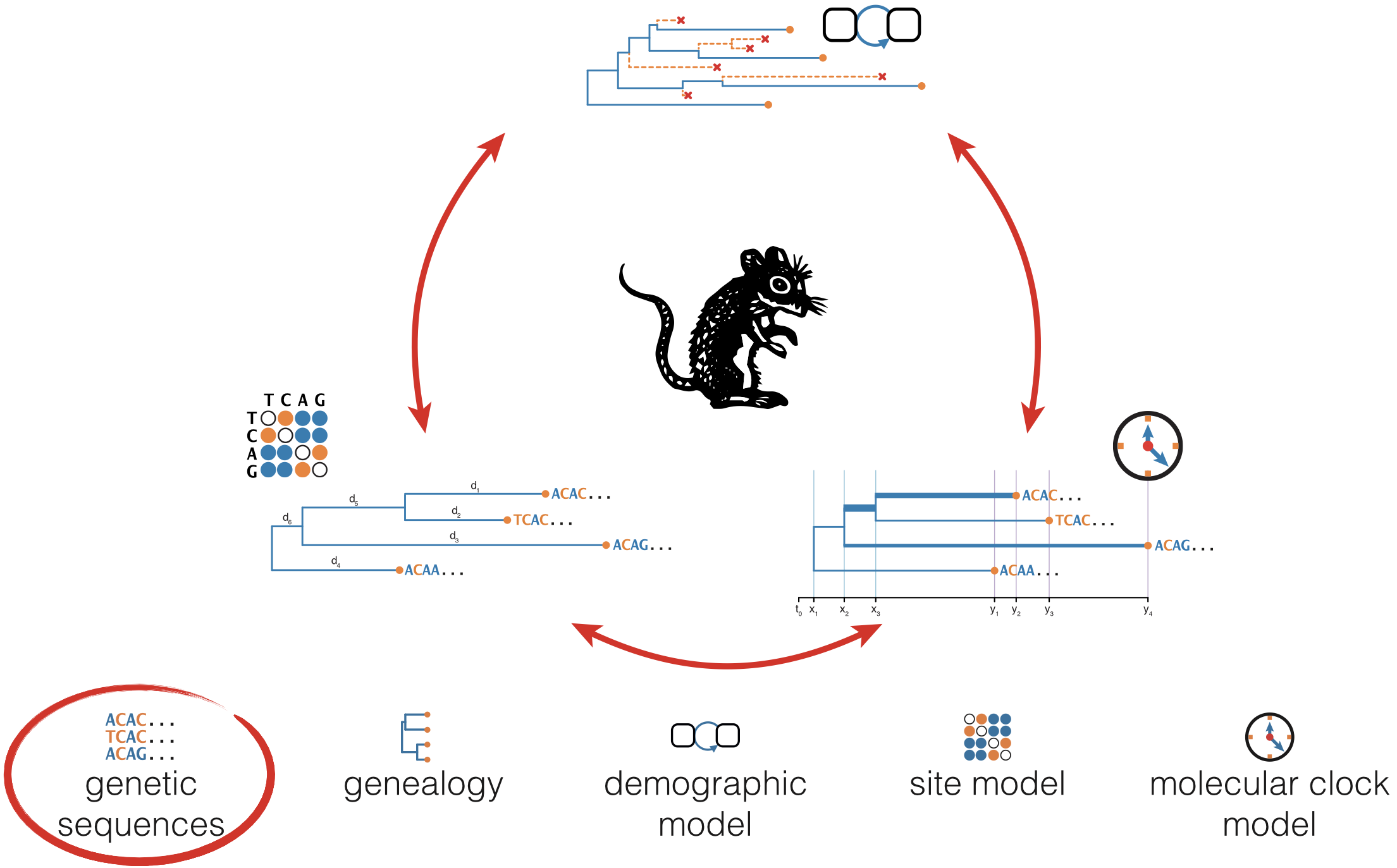
The Data
- Typically an alignment of RNA or DNA sequences.
- Can also be an amino acid sequence.
- Often split into multiple "partitions" to allow specific sites
to evolve at diffferent rates, e.g.
- Coding/non-coding sites,
- Different codon positions (1+2 vs 3).
- Not necessarily composed of genetic sequences!
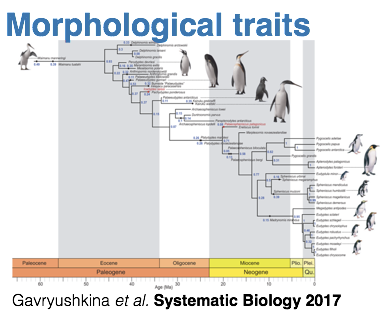

What goes into a BEAST 2 Model?
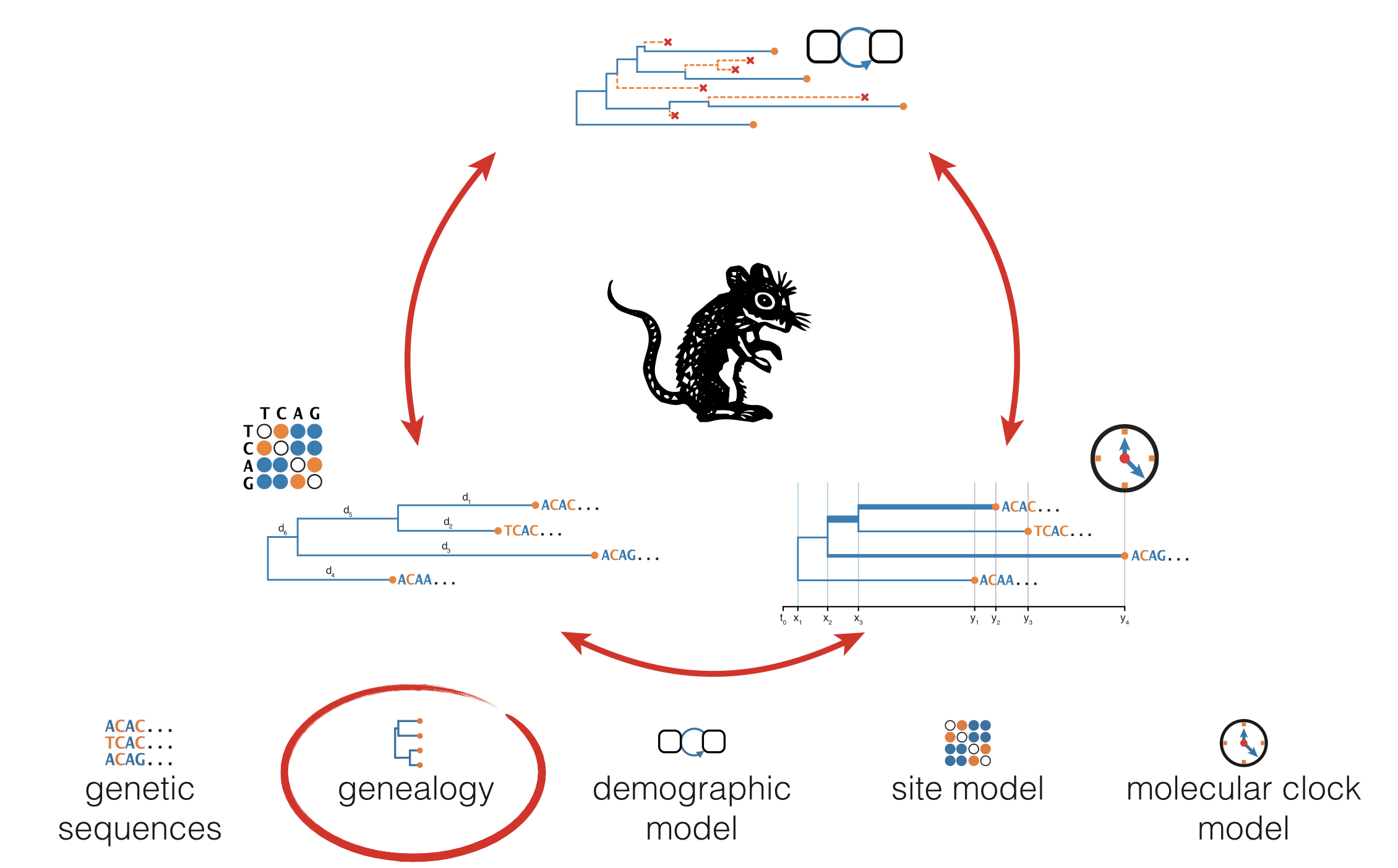
The Genealogy
The fundamental genealogical structure in BEAST 2 is the rooted time tree:
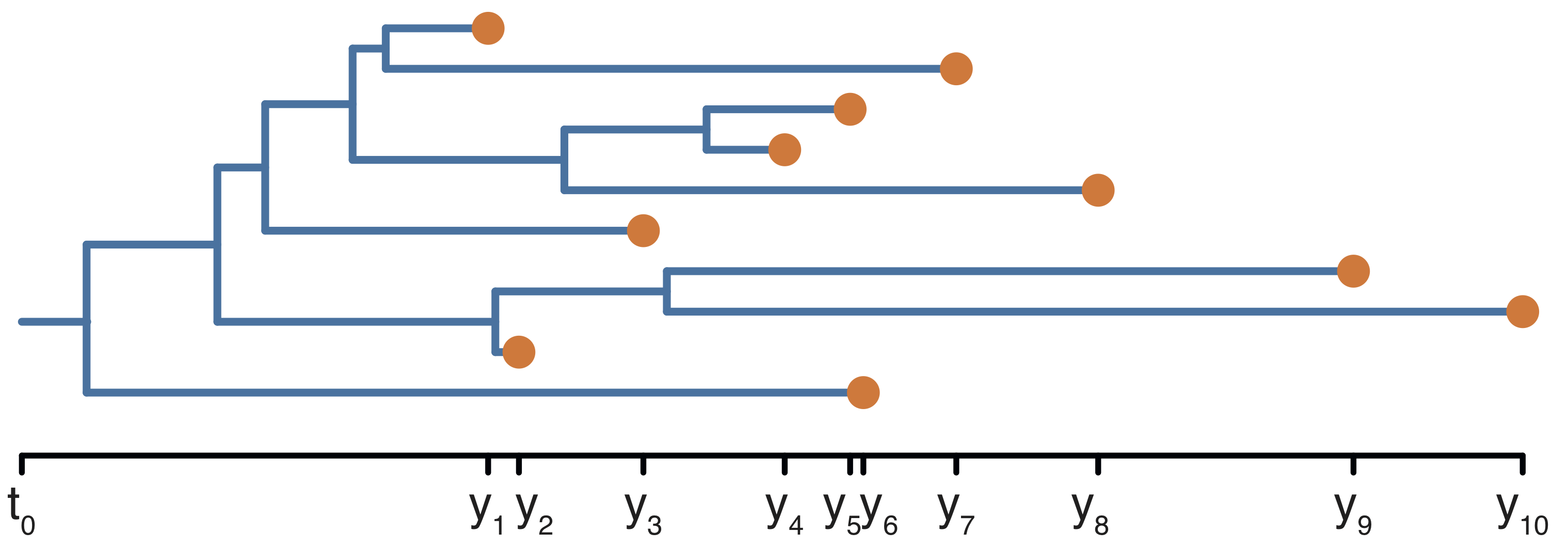
- This tree is a "sampled" or "reconstructed" tree.
- Displays relationships between sampled individuals/taxa only.
- In contrast to the "full" tree including unsampled individuals/taxa.
What goes into a BEAST 2 Model?
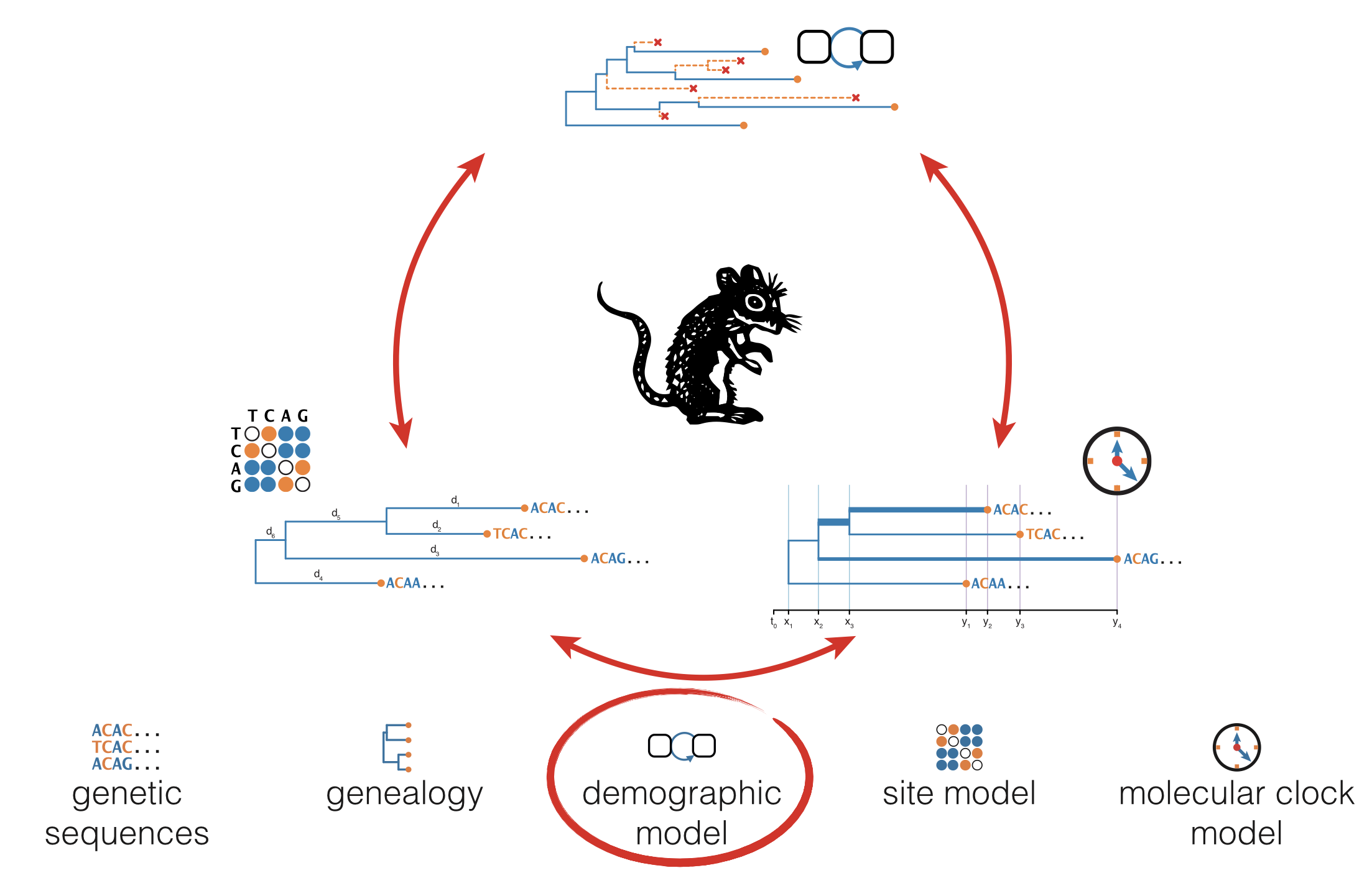
Different population dynamics produce different phylogenetic tree shapes
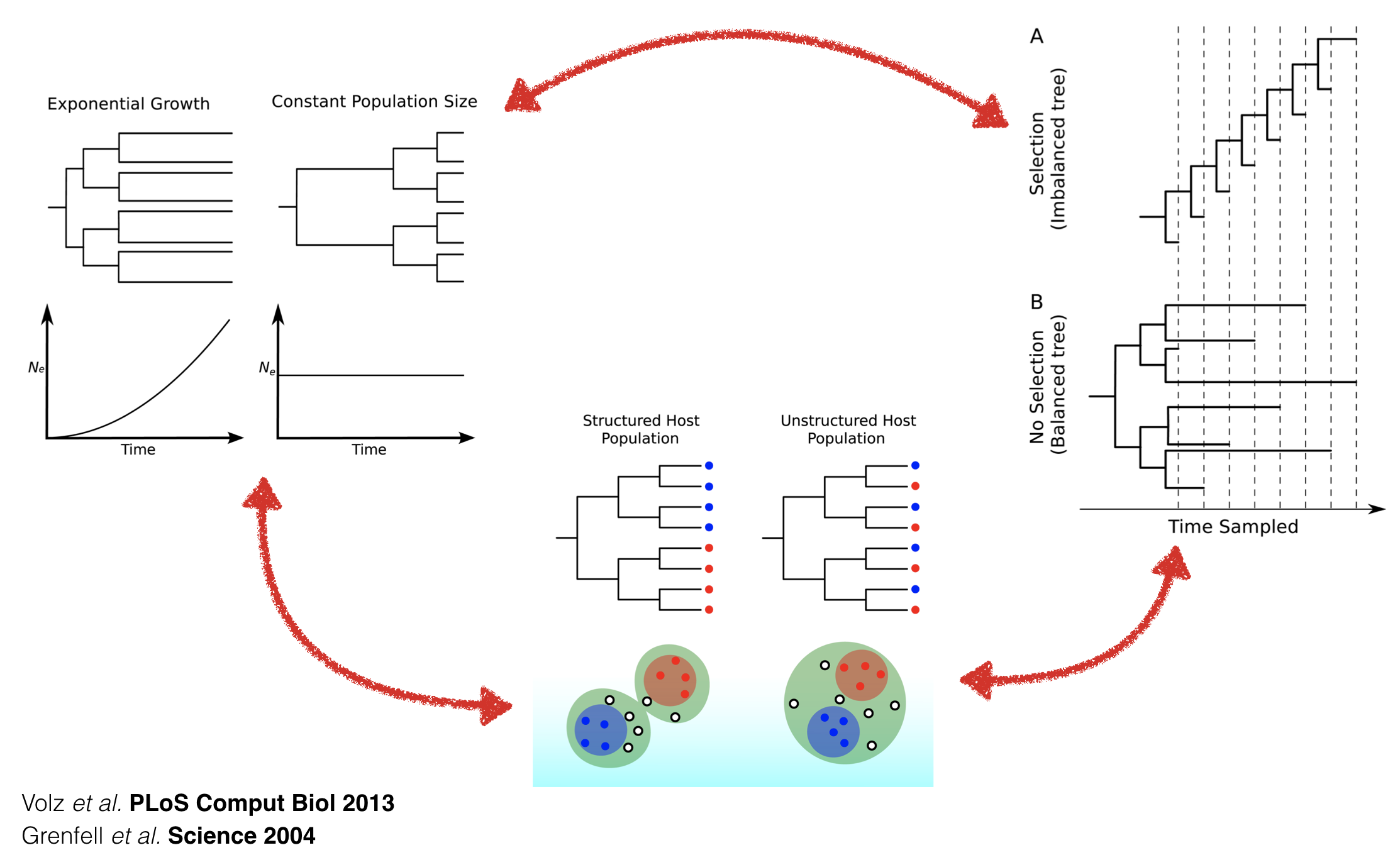
Demographic model
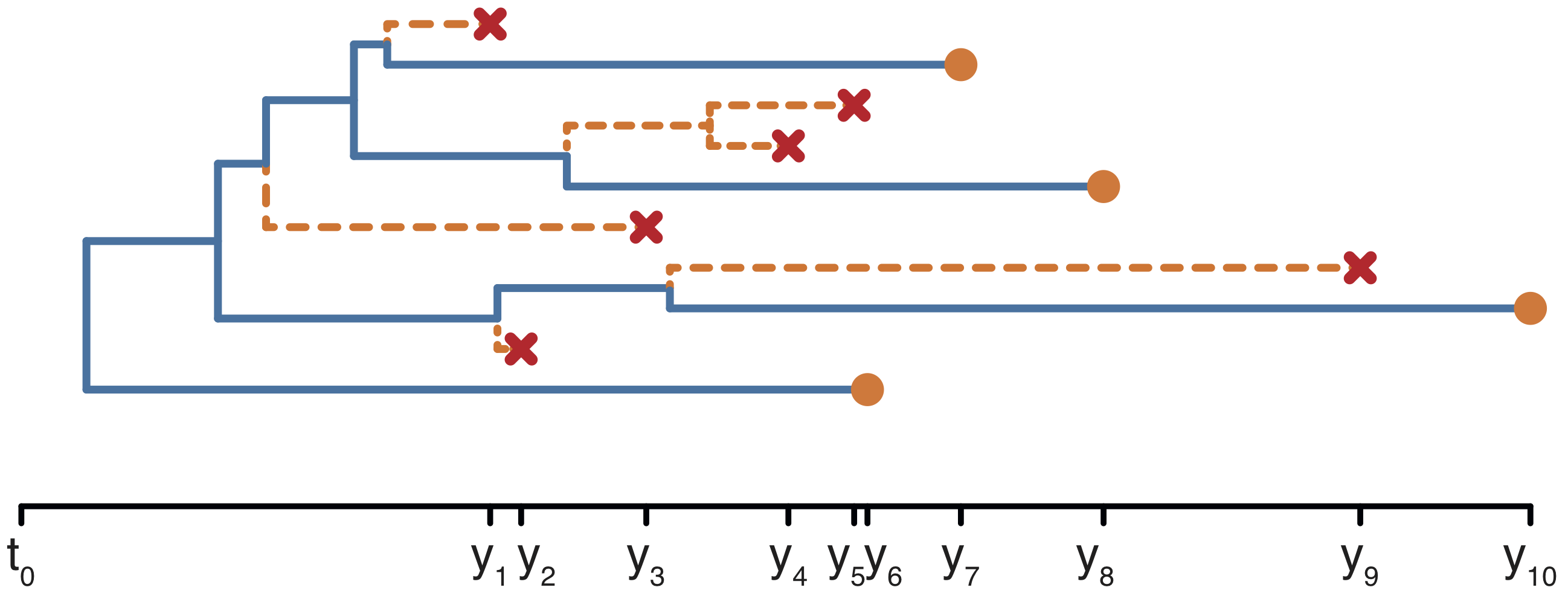
- Describes the population (incl. individuals/species/etc.) dynamics.
- How does a population of organisms change through time?
- How does the species richness change through time?
- Described by the "tree prior".
- Usually a birth-death or coalescent model.
What goes into a BEAST 2 Model?
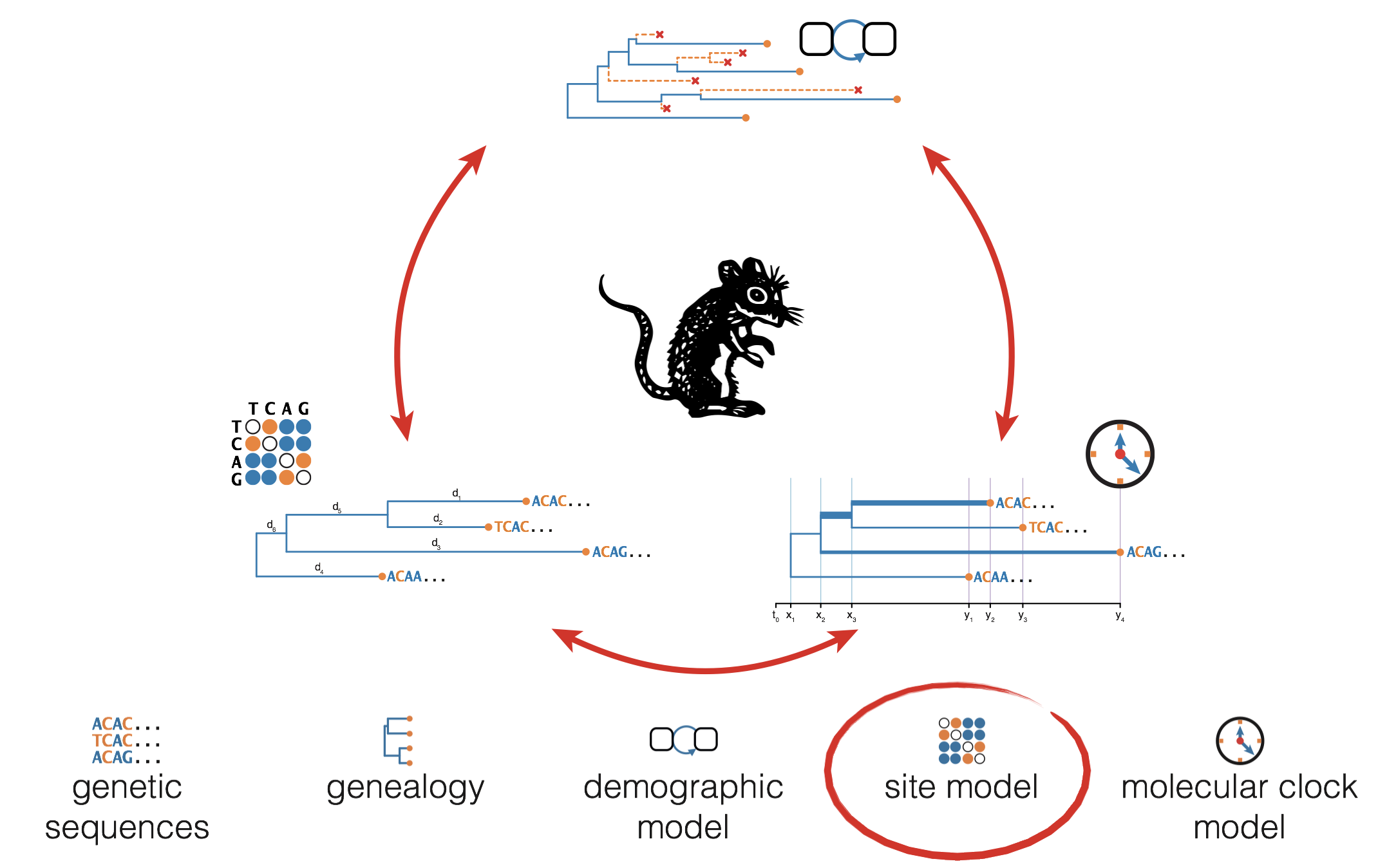
Site model

- Links the genome sequences to the genealogy.
- We observe sequences at the tips, not their histories.
- Multiple substitutions at the same site means not all substitutions are observed.
- Site model describes rates of substitution between available characters relative to genetic distance, as well as equilibrium frequencies of characters.
- May also permit site-to-site rate variation.
What goes into a BEAST 2 Model?
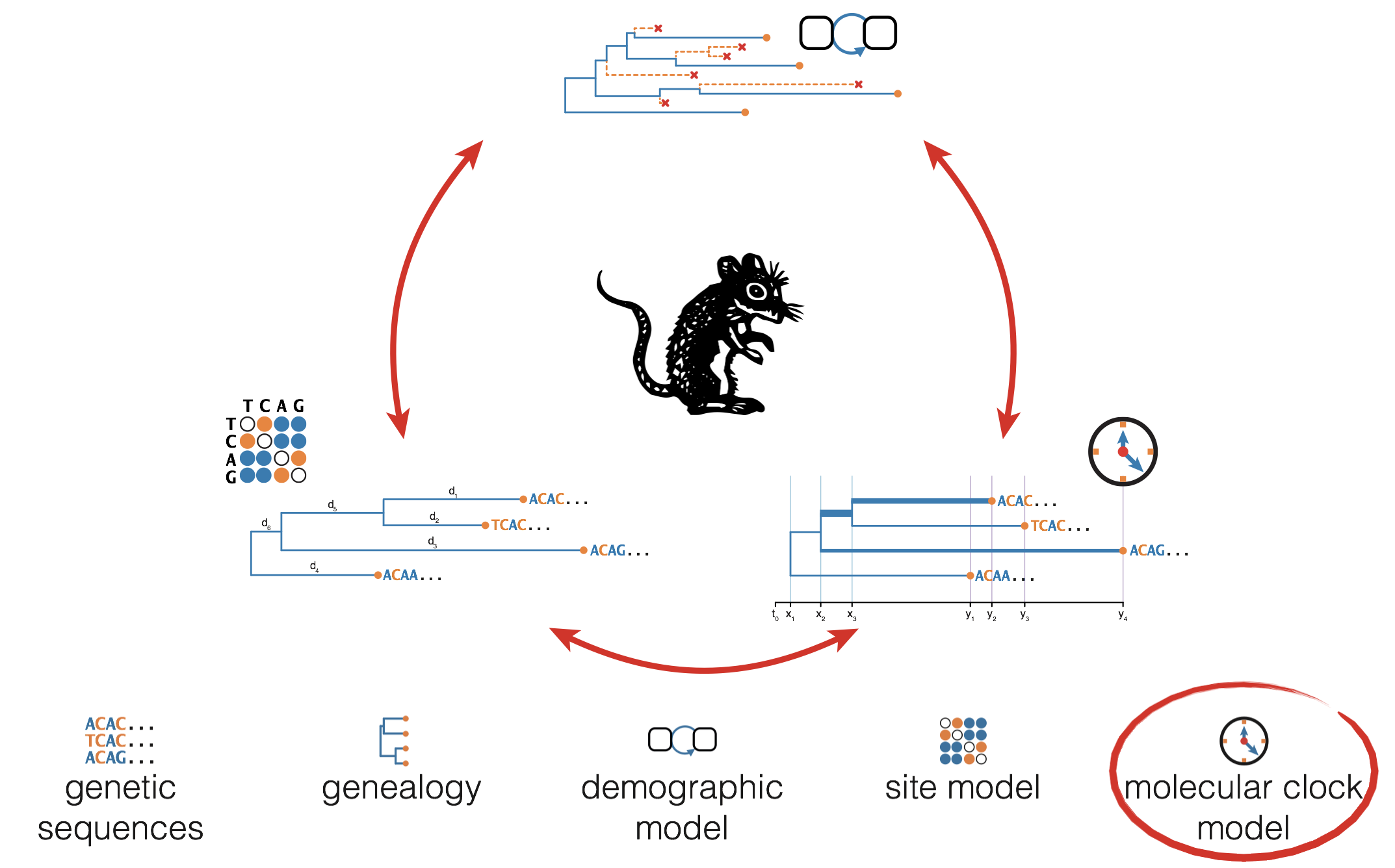
Clock model
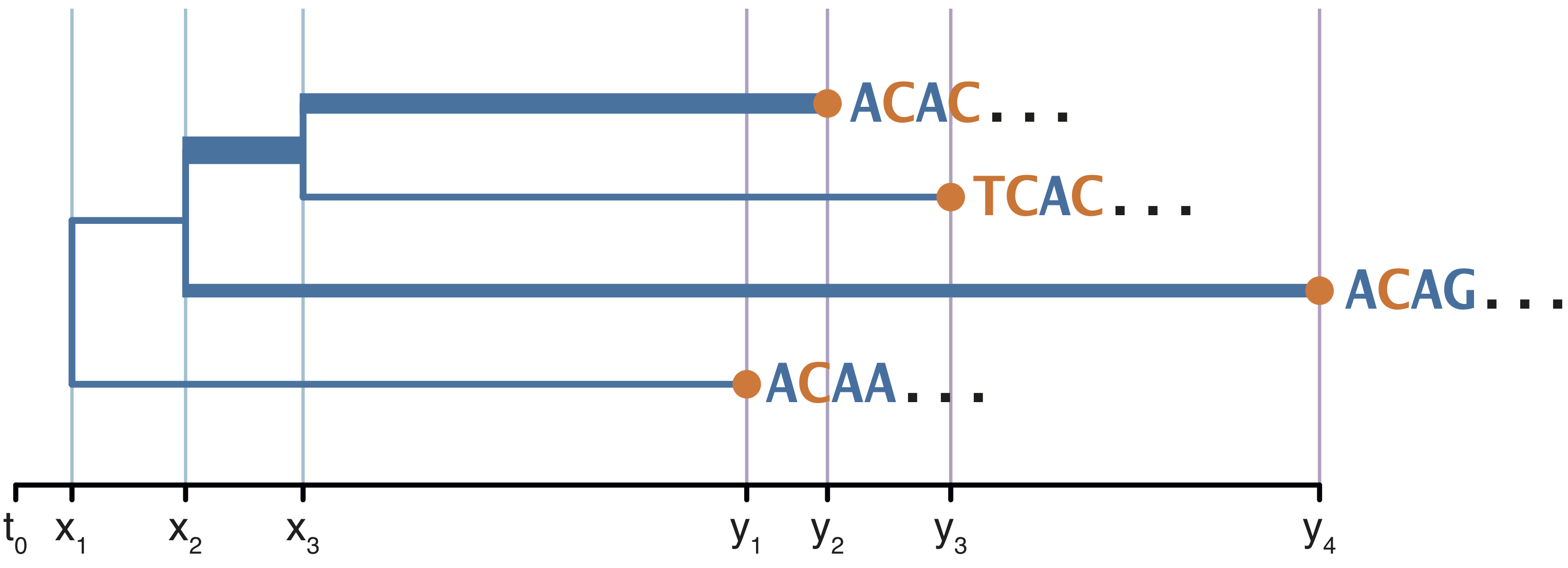
- Determines how quickly sequences are evolving along the tree.
- Different tree edges may have the same or different clock rates:
- Strict clock models: all edges have equal rates
- Relaxed clock models: edges may take different rates
Putting it all together...


Assume independence of various model components:

BEAST 2 In Practice
BEAST 2 Workflow
BEAUti: Bayesian Evolutionary Analysis Utility
Graphical tool for setting up a BEAST analysis.
- Input
- Genetic sequence data, together with other data sources (locations, sample times, etc.)
- Output
- Compact XML description of data, model and prior distributions.
BEAUti: Bayesian Evolutionary Analysis Utility
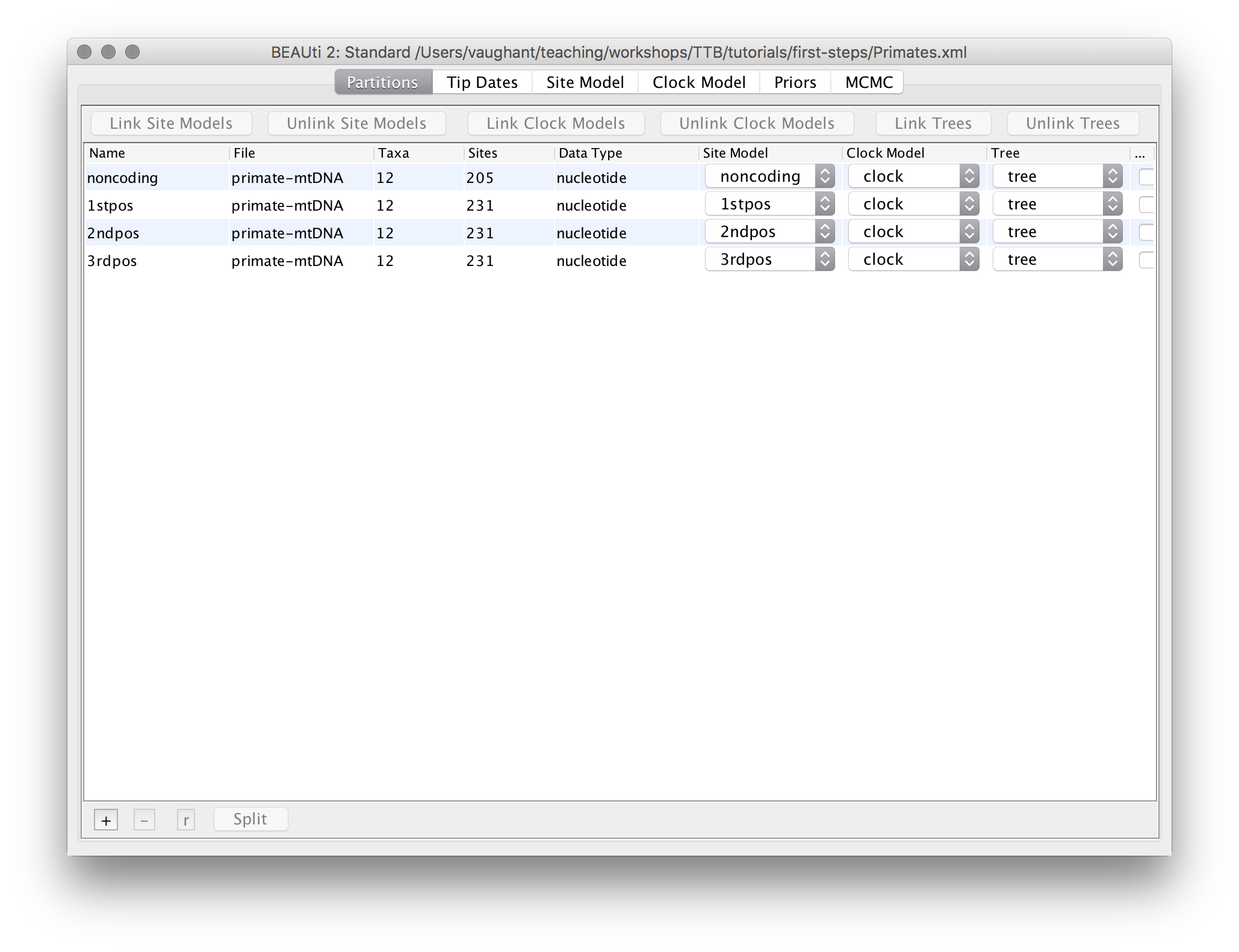
BEAUti: Bayesian Evolutionary Analysis Utility
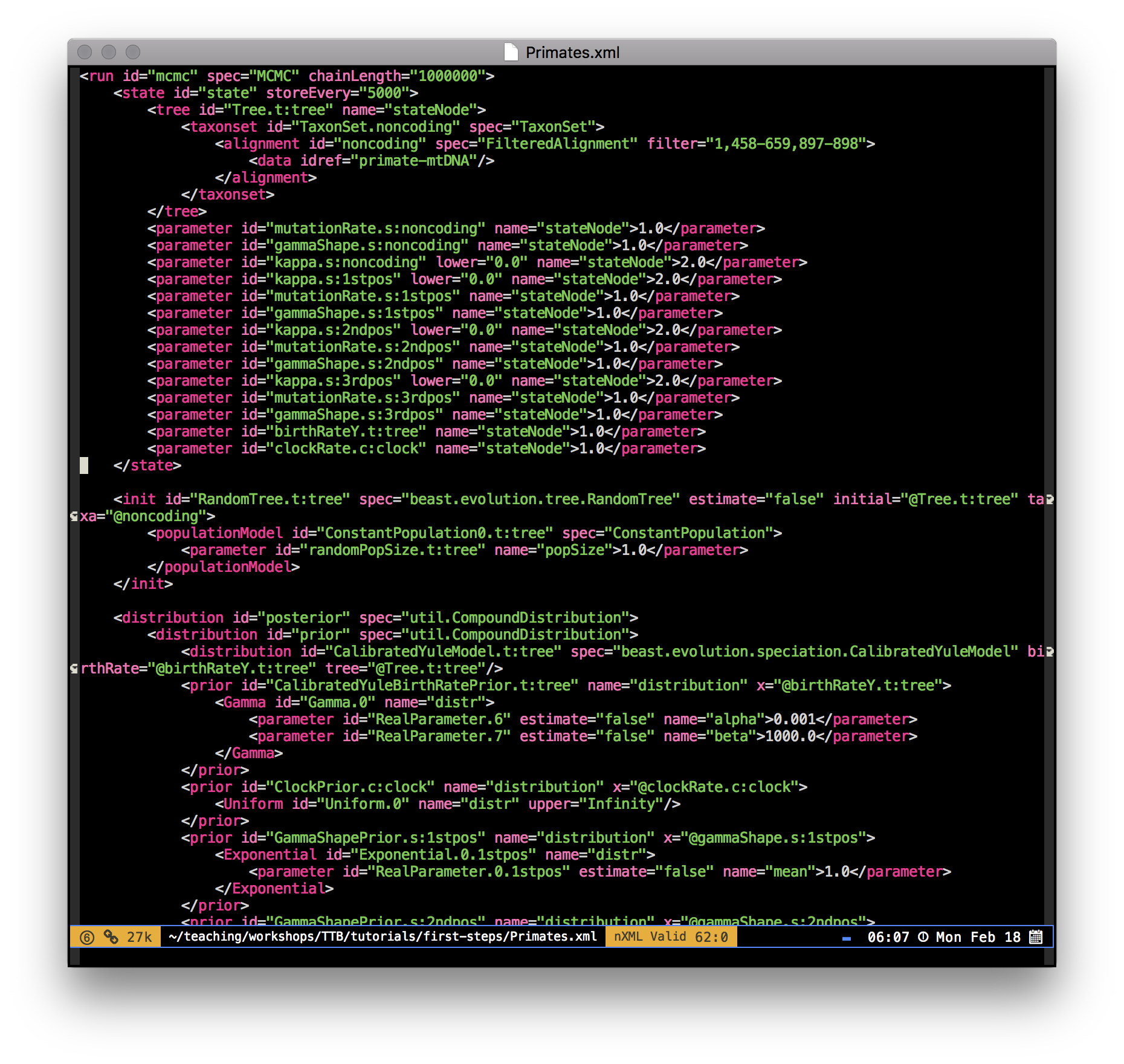
BEAST 2: Bayesian Evolutionary Analysis by Sampling Trees
- Performs MCMC analyses of sequences under selected sequence evolution and tree (epidemiological/speciation) model.
- Similar to BEAST 1.8.4/1.10 but completely separate and generally incompatable.
- BEAST2 and BEAST1 have a common origin, have much of the same functionality but have diverged over time.
- BEAST2 has a modular design that makes it easy to extend.
- Input
- XML model description file
- Output
- (Trace) log file
- Tree (log) file
BEAST 2: Bayesian Evolutionary Analysis by Sampling Trees
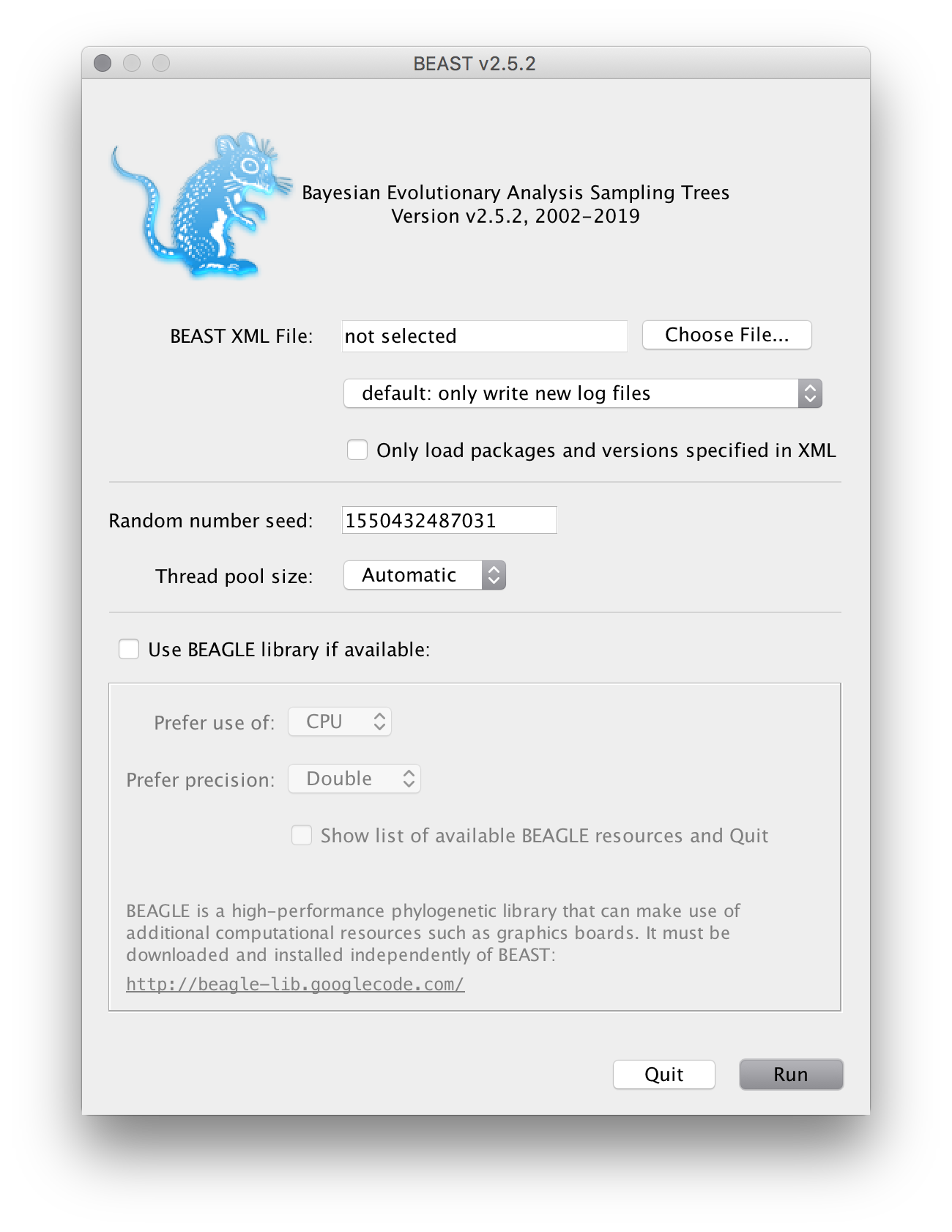
BEAST 2 Packages
- BEAST 2 is organized into a central "core" together with a large number of separate "packages".
- Packages can be developed by anybody - including you!
- Can be directly integrated into BEAST 2 and updated frequently without waiting for a full BEAST 2 release.
- Packages add new models or completely new functionality
:
- Phylogeography,
- bacterial ARG inference,
- morphological models,
- model selection and averaging,
- stochastic simulations,
- ...
- Install new packages through BEAUti.
BEAST 2 Packages
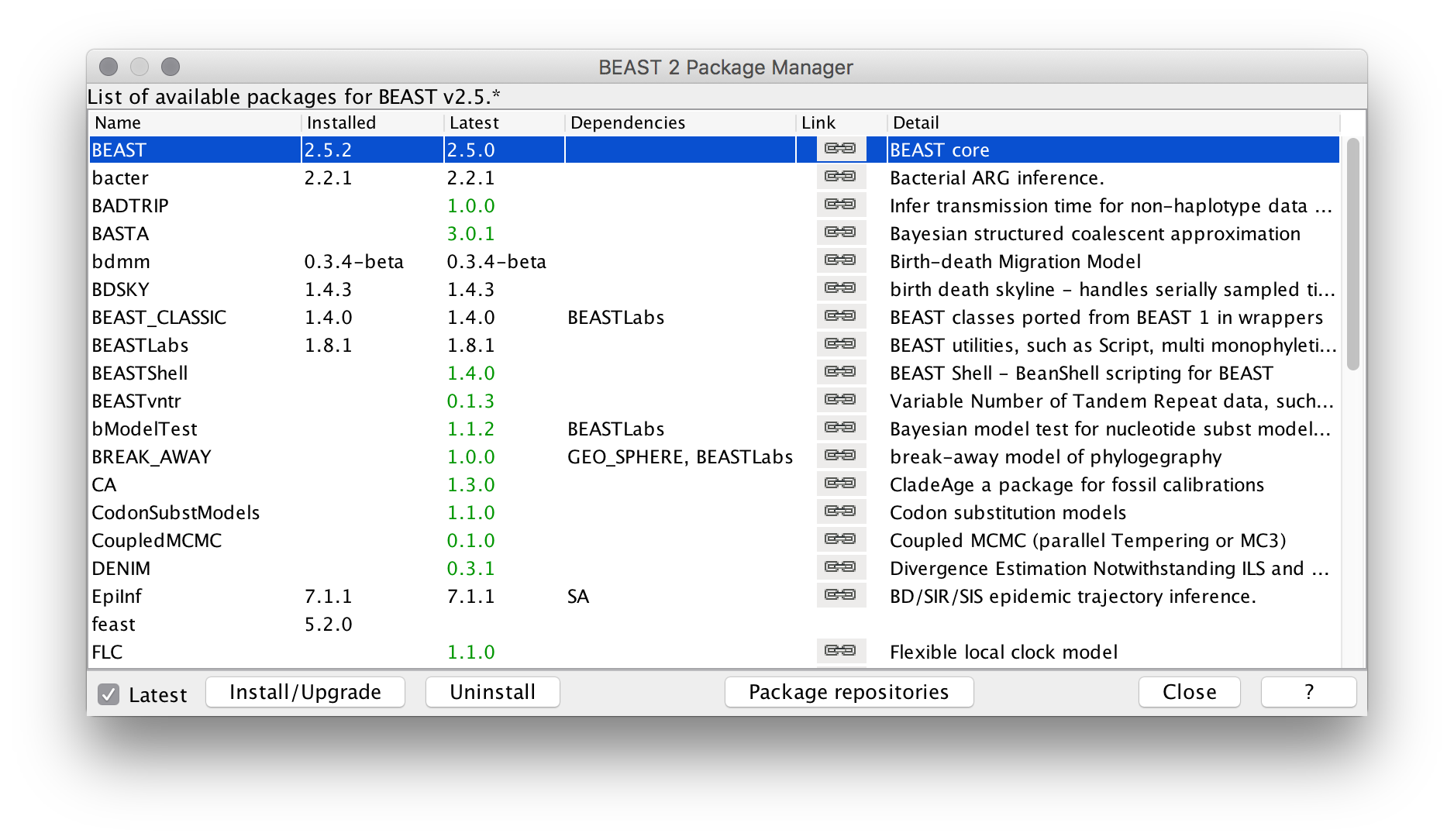
Tracer (http://beast.community)
- Analyse (parameter) log files from BEAST2 runs
- Assess mixing, ESS, ACT, parameter correlations
- Provides overview of posterior parameter estimates
- Comparisons of several analyses.
- Tracer is primarily a diagnostic tool — usually want to perform final analyses in a statistical package like R.
- Input
- One or more log files
- Output
- Insight
Tracer (http://beast.community)
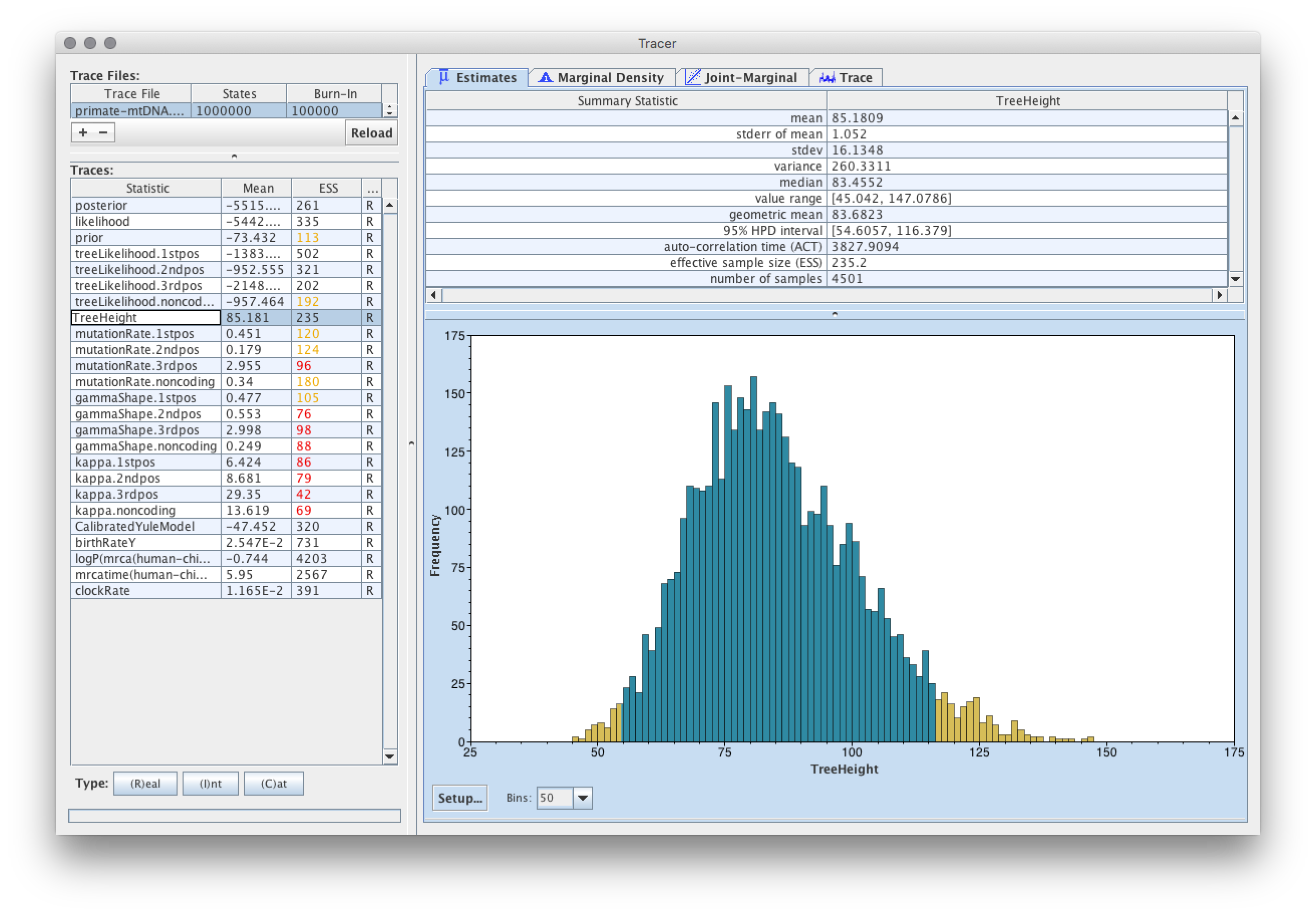
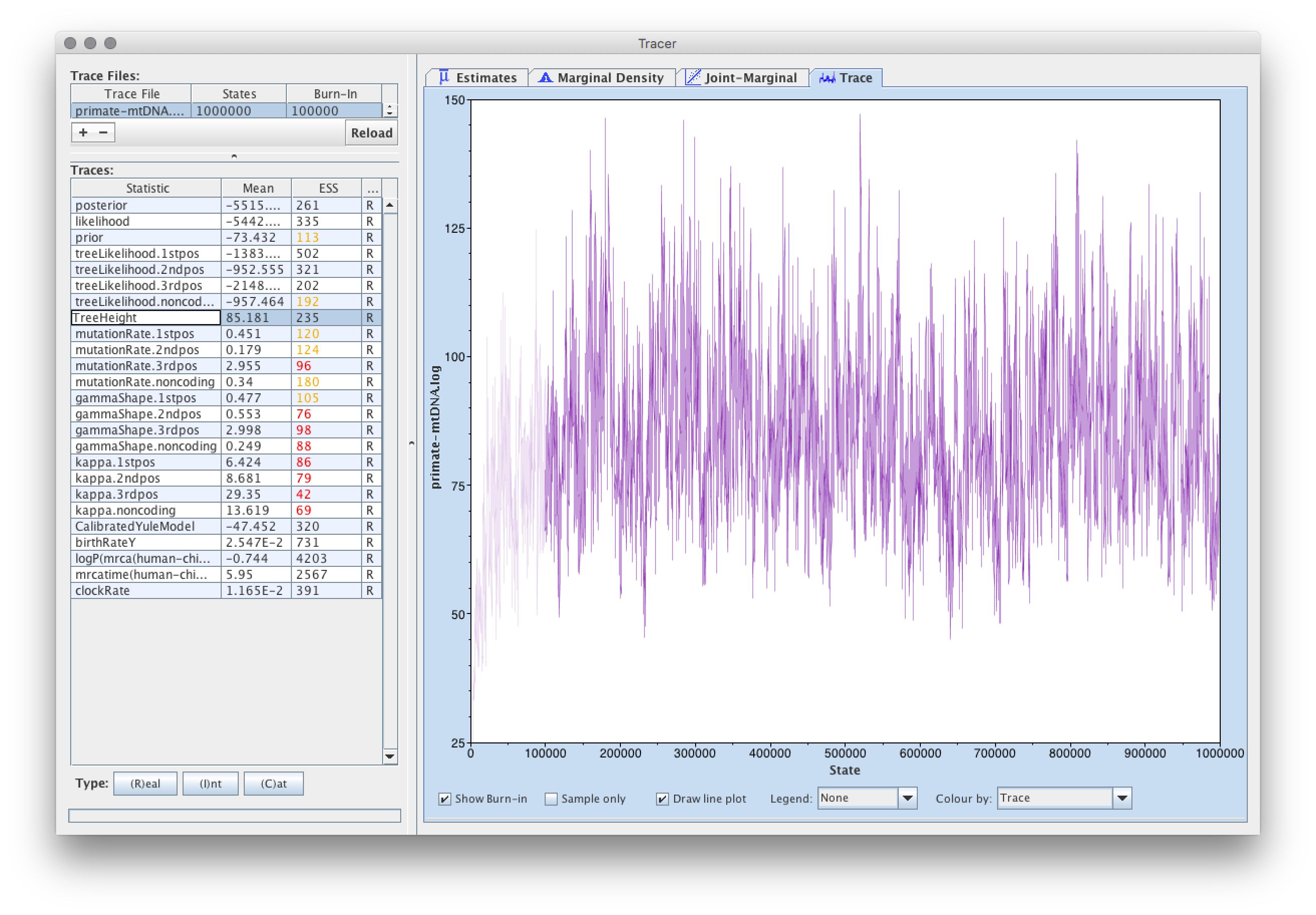
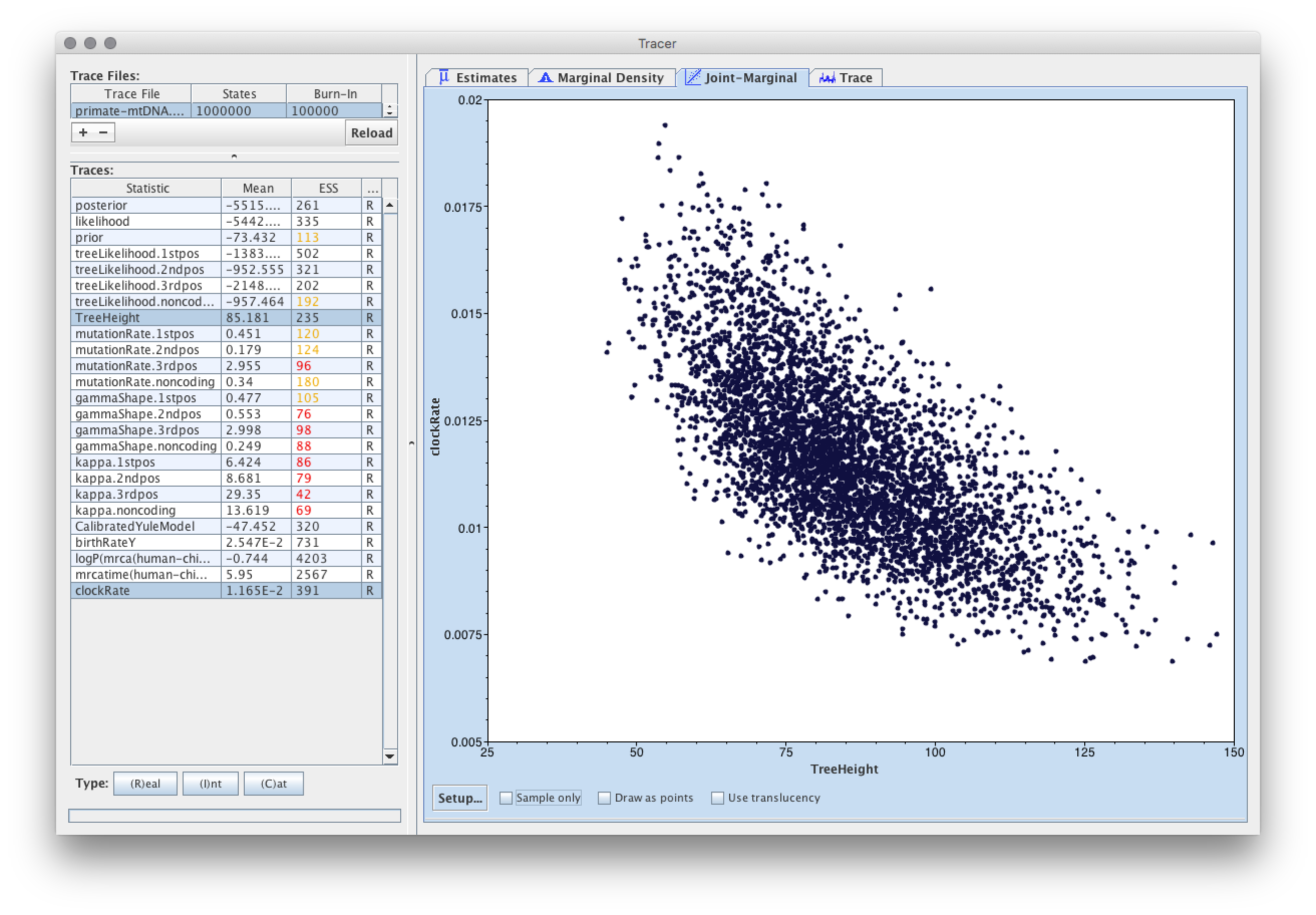
TreeAnnotator (included with BEAST 2)
- Analyse trees file from BEAST2 runs.
- Produces single summary tree with node annotations (including clade posterior probabilities).
- Positions internal nodes according to average taxon set MRCA times in trees file.
- Note that the MCC tree is just a heuristic summary: may produce negative edge lengths when topological uncertainty is large!
- Input
- Tree log file
- Output
- File containing annotated summary tree
TreeAnnotator (included with BEAST 2)
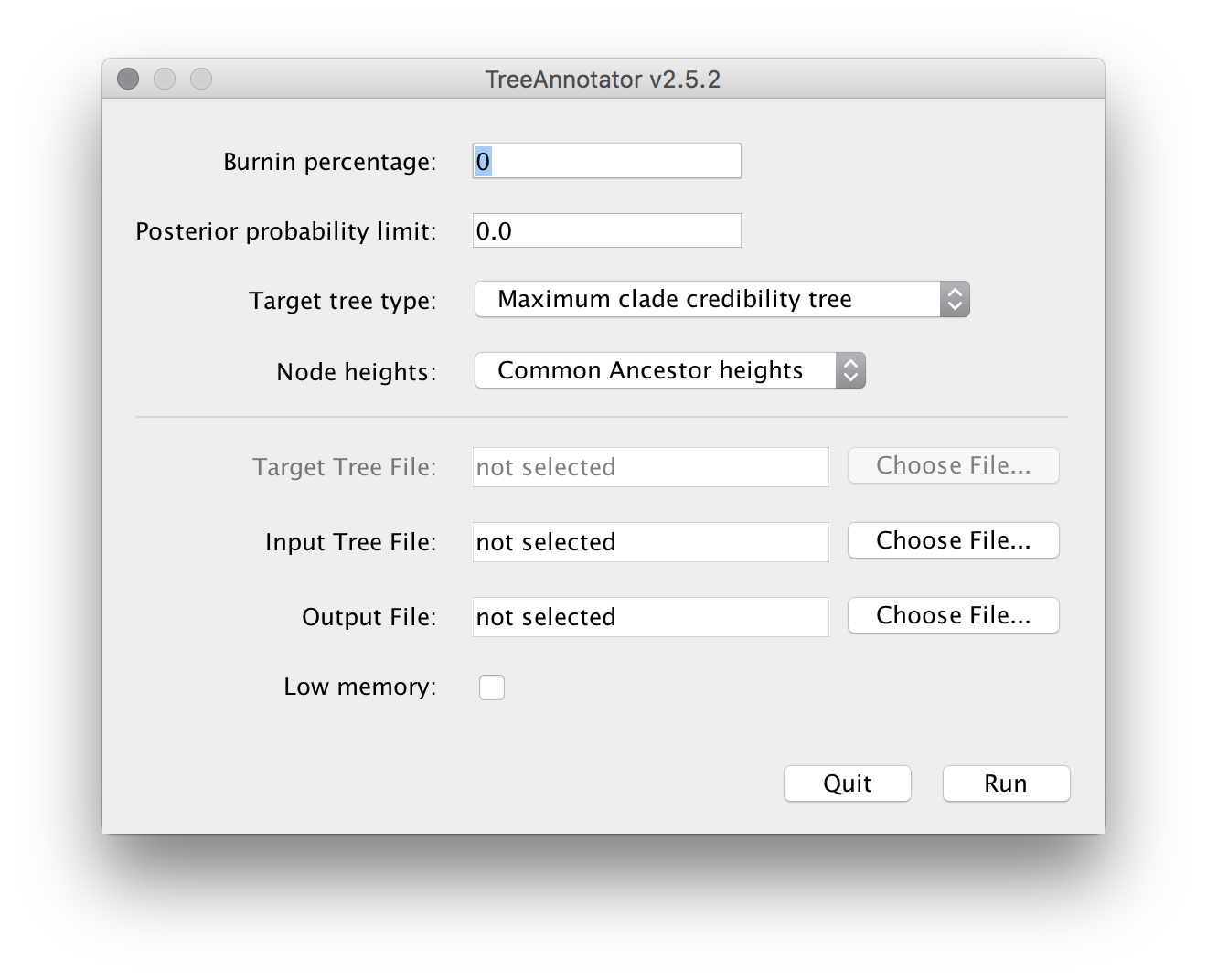
FigTree (tree.bio.ed.ac.uk/software/figtree/)
- Visualise trees from BEAST2 runs.
- Annotate branches and nodes with probabilities and labels.
- Many different tree visualisation styles: circular, unrooted, etc.
- Allows highlighting of particular clades, colouring of edges and more.
- Input
- Tree file (eg. TreeAnnotator output)
- Output
- Tree visualisation
FigTree (tree.bio.ed.ac.uk/software/figtree/)
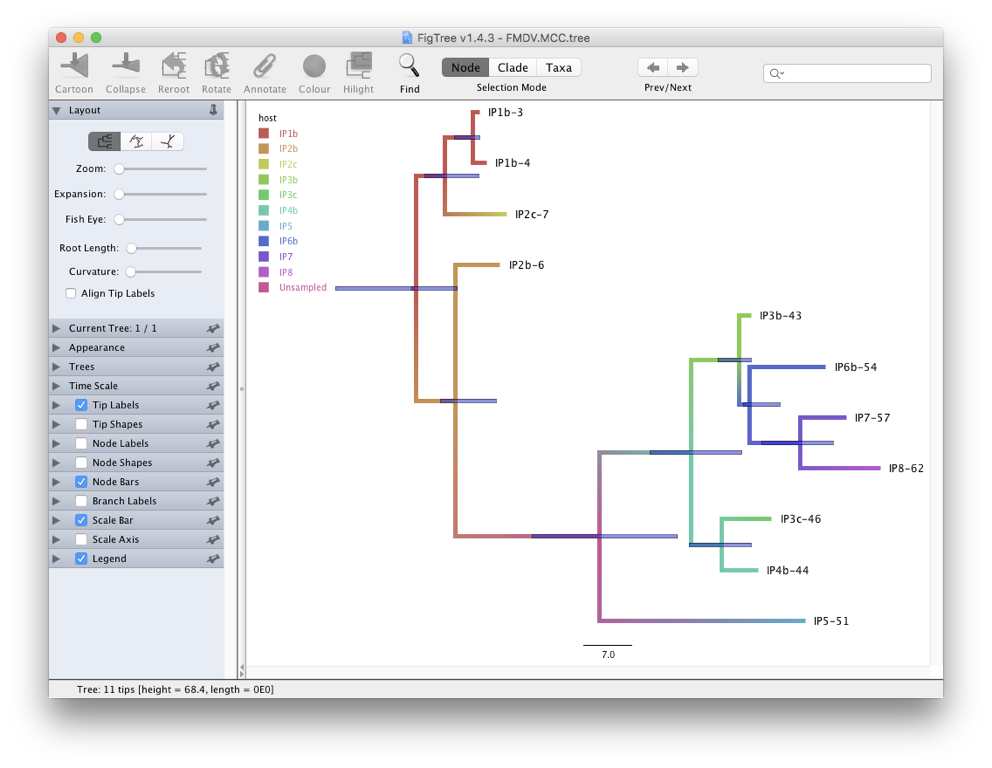
IcyTree (icytree.org)
- Similar to FigTree, but places an emphasis on quick visualisation rather than publication quality output.
- Only rooted rectangular style visualisation supported.
- Rudimentary support for phylogenetic networks.
- Web app: no installation required, just visit icytree.org.
IcyTree (icytree.org)
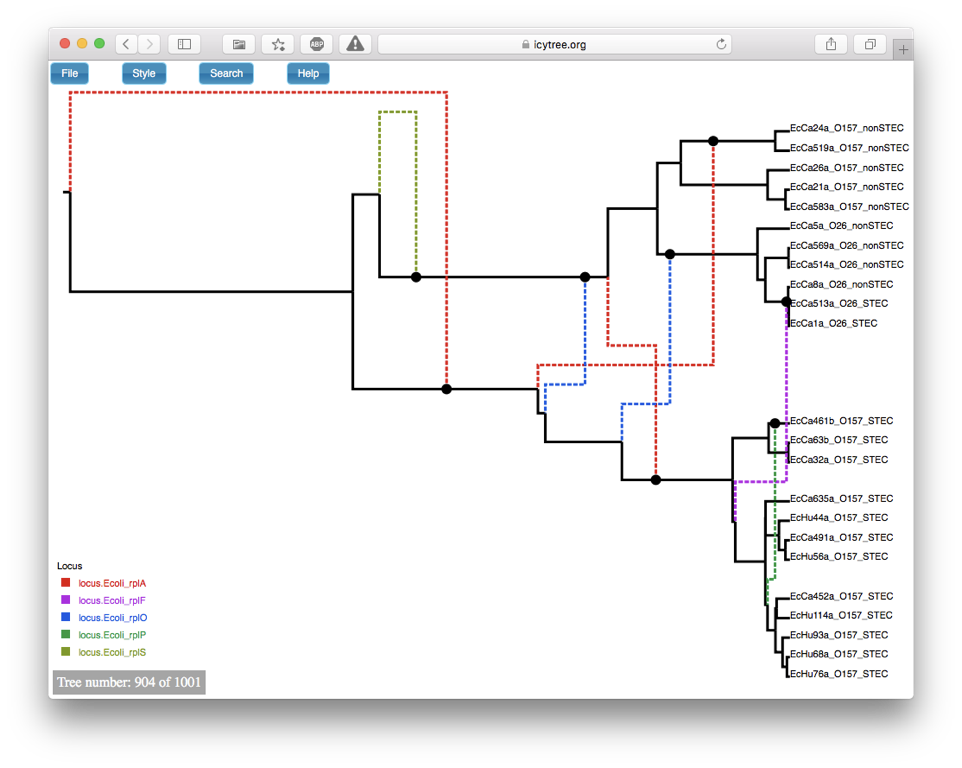
ggtree
(guangchuangyu.github.io/software/ggtree/)
- R-package to visualise trees using something like Hadley Wickham's grammar of graphics (ggplot)
- Works with BEAST2 tree files (and many other packages)
- Can be easily annotate trees with other analyses in R
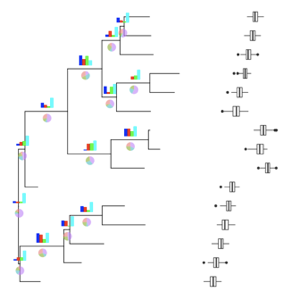
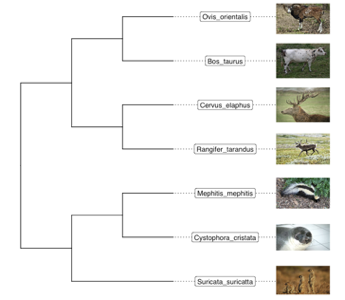
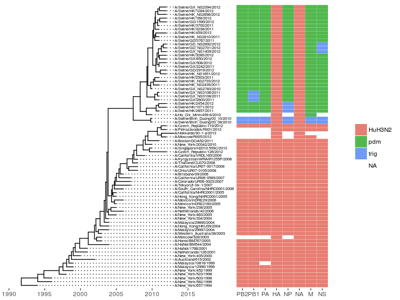
Summary: BEAST 2 Workflow
Summary: Tools of the Trade
- BEAST2
- Software implementing MCMC for model parameter and tree inference
- BEAUti2
- Part of BEAST2 package for setting up the input file (.xml)
- Tracer
- Analysis of BEAST1 and BEAST2 output files (.log)
- TreeAnnotator
- Analysis of BEAST2 output files (.trees)
- FigTree, IcyTree, ggtree
- Visualisation of trees (.trees)
Tutorial
taming-the-beast.org/tutorials/Introduction-to-BEAST2/
or follow the link from the workshop programme page.